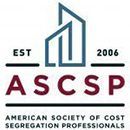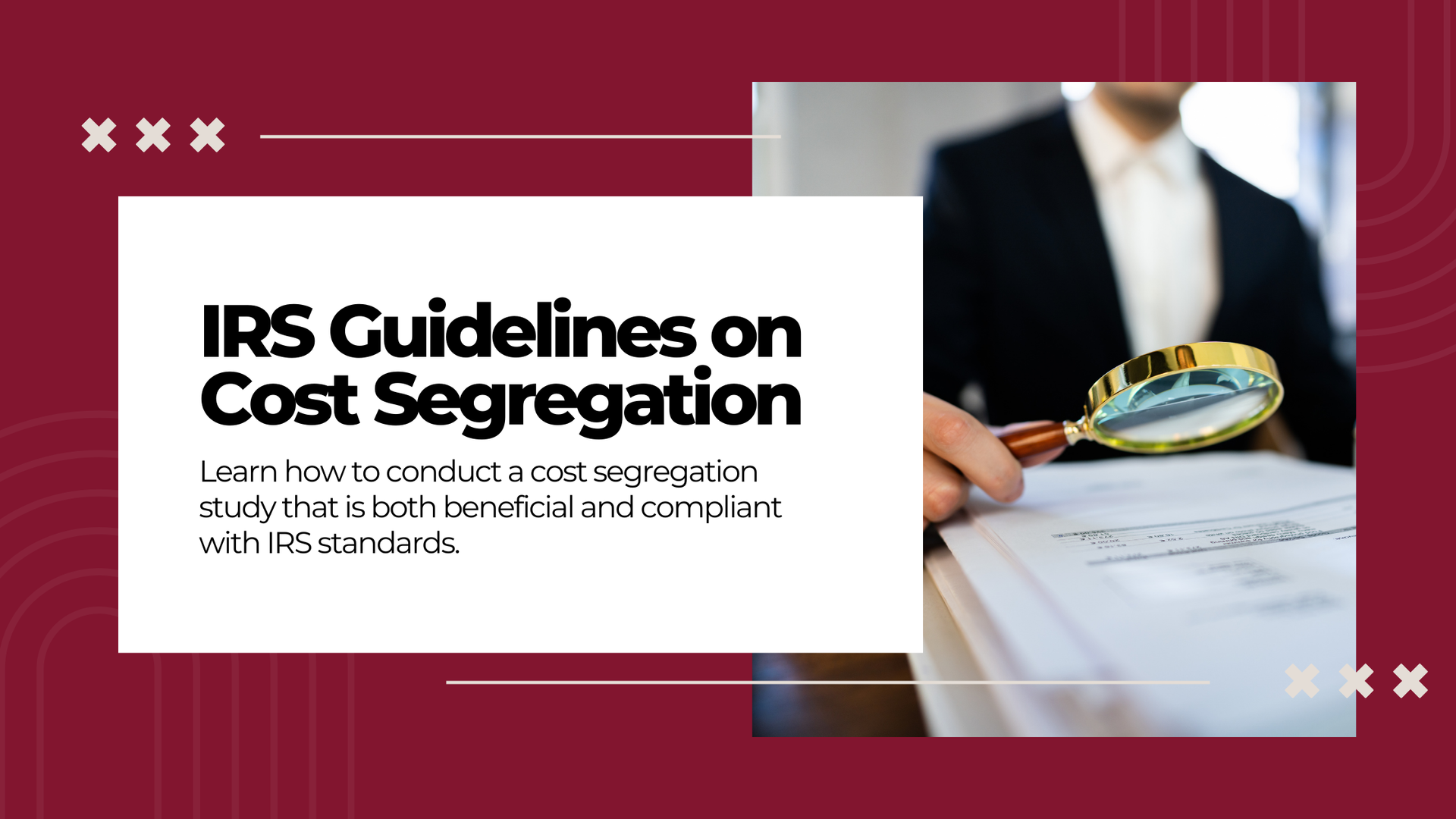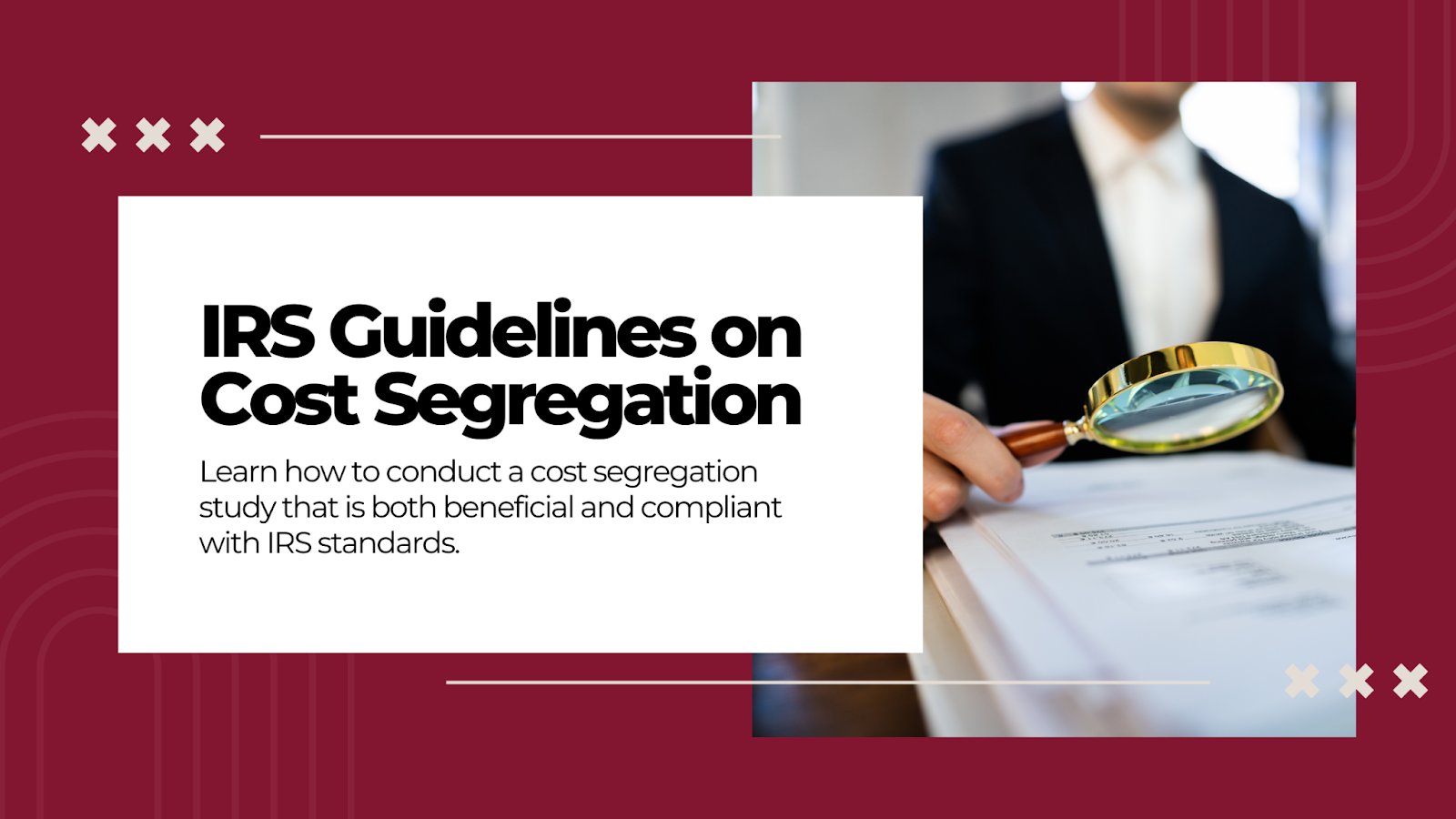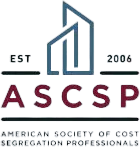IRS Guidelines on Cost Segregation
When it comes to cost segregation, adherence to IRS guidelines is paramount for property owners aiming to maximize their tax savings while avoiding audits and penalties. These guidelines ensure that the process is carried out with precision, compliance, and integrity, safeguarding property owners from potential financial pitfalls.
Consider the case of a commercial property owner who diligently followed IRS guidelines during their cost segregation study. By adhering to these standards, they not only secured over $300,000 in tax savings but also successfully navigated an IRS audit with flying colors. Understanding and complying with IRS guidelines in cost segregation is essential for property owners looking to optimize their tax strategy.
In this blog, we will dive into the fundamentals of these guidelines, explore key requirements set forth by the IRS, discuss common mistakes to avoid, and highlight best practices to ensure compliance. By the end, you'll have a clear understanding of how to conduct a cost segregation study that is both beneficial and compliant with IRS standards.
Cost Segregation Basics
Instead of depreciating the entire property over the standard 27.5 or 39-year period, cost segregation identifies specific assets within the property that can be depreciated over shorter lifespans, such as 5, 7, or 15 years. The primary benefits of cost segregation include:
- Increased Cash Flow: By accelerating depreciation deductions, property owners can significantly reduce their taxable income in the early years of property ownership, leading to immediate tax savings.
- Enhanced Tax Benefits: Cost segregation can uncover additional tax deductions that might otherwise go unnoticed, optimizing overall tax strategy.
- Improved Return on Investment:
The increased cash flow from tax savings can be reinvested into the property or other business opportunities, enhancing financial growth and stability.
IRS Guidelines
The IRS has established specific guidelines to govern the process of cost segregation studies, ensuring that they are conducted with accuracy and compliance. These guidelines are designed to provide a framework for property owners and tax professionals to follow, minimizing the risk of audit and penalties. The main purposes of the IRS guidelines are:
- Ensuring Compliance: By adhering to IRS guidelines, property owners can ensure that their cost segregation studies meet all legal and regulatory requirements, reducing the likelihood of facing audits or penalties.
- Promoting Accuracy: The guidelines emphasize the need for precise classification and documentation of building components, which is crucial for accurately determining depreciation deductions.
- Providing Clarity: The IRS guidelines offer clear instructions on the methods and practices to be used in cost segregation studies, helping property owners and professionals navigate the complexities of the process.
Key IRS Guidelines for Cost Segregation
Detailed Engineering Approach
The IRS strongly prefers a detailed engineering approach for cost segregation studies over a rule-of-thumb method. This approach involves a meticulous analysis of the building and its components by professionals with expertise in construction, engineering, and architecture. The detailed engineering approach is favored because:
- Accuracy: It ensures a precise and accurate classification of assets, aligning with IRS regulations.
- Comprehensive Analysis: Engineers conduct thorough on-site inspections, review construction documents, and allocate costs based on specific building components.
- Defensible Results: The detailed engineering approach produces well-documented and substantiated findings, which are essential for defending the study in the event of an IRS audit.
Component Classification
This involves segregating the property into different categories, such as personal property, land improvements, and real property. The importance of this precise classification lies in:
- Optimized Depreciation: Accurate classification allows for the correct application of depreciation schedules, maximizing tax benefits.
- Compliance: Proper classification ensures adherence to IRS rules and reduces the risk of misclassification, which could lead to penalties or audits.
- Detailed Documentation: Each component must be meticulously documented, including its description, cost, and the rationale for its classification. This documentation is crucial for supporting the study's findings and ensuring compliance with IRS requirements.
Audit Readiness
The IRS guidelines emphasize the importance of maintaining detailed records throughout the cost segregation process. Key aspects of audit readiness include:
- Comprehensive Reports: The final cost segregation report should include detailed descriptions of the methodology used, the classification of each component, and the calculations supporting the reclassification.
- Supporting Evidence: All supporting documents, such as construction invoices, blueprints, and engineering assessments, should be organized and readily available to substantiate the study's findings.
- Consistent Practices: Adopting consistent and standardized practices in conducting cost segregation studies helps ensure that all necessary documentation is in place and that the study can withstand IRS scrutiny.
Common Mistakes and How to Avoid Them
Inadequate Documentation
One of the most significant pitfalls in cost segregation studies is inadequate documentation. Insufficient records can lead to challenges during IRS audits and may result in disallowed deductions or penalties. Common issues related to documentation include missing invoices, incomplete descriptions of reclassified assets, and lack of supporting evidence for cost allocations.
How to Avoid This Mistake:
- Maintain Detailed Records: Ensure that all relevant documents, such as construction invoices, blueprints, and engineering reports, are meticulously maintained and organized.
- Comprehensive Reports: Generate thorough and detailed cost segregation reports that include clear descriptions of the methodology used, the reclassification of assets, and the supporting calculations.
- Consistent Documentation Practices: Adopt consistent documentation practices throughout the study to ensure that all necessary information is captured and easily accessible.
Misclassification of Assets
Misclassification of assets is another common error that can result in incorrect depreciation schedules and potential issues during an IRS audit. This mistake often occurs when property components are incorrectly categorized, leading to either overstatement or understatement of depreciation deductions.
How to Avoid This Mistake:
- Follow IRS Guidelines: Adhere strictly to IRS guidelines for asset classification, ensuring that each component is accurately categorized.
- Use Professional Expertise: Engage qualified professionals with expertise in cost segregation to analyze and classify building components accurately.
- Regular Reviews: Periodically review classifications to ensure they remain accurate and compliant with any changes in IRS regulations or property use.
Lack of Expertise
Attempting to conduct a cost segregation study without the necessary expertise can lead to numerous issues, including misclassification of assets, inadequate documentation, and non-compliance with IRS guidelines. This lack of expertise can significantly undermine the benefits of a cost segregation study and increase the risk of audit.
How to Avoid This Mistake:
- Hire Qualified Professionals: Work with experienced engineers, accountants, and tax professionals who specialize in cost segregation studies. Their expertise is crucial for ensuring accuracy and compliance.
- Continuous Education: Stay informed about the latest IRS guidelines and best practices in cost segregation to ensure that the study is conducted according to current standards.
- Collaborate with Experts: Foster collaboration between property owners, tax advisors, and engineering professionals to leverage their combined expertise for the best outcomes.
Take Action with Cost Segregation
Best Practices
To ensure compliance with IRS guidelines and maximize the benefits of cost segregation, property owners should follow these best practices:
- Engage Qualified Professionals: Work with experienced engineers, accountants, and tax professionals who specialize in cost segregation. Their expertise is invaluable for conducting accurate and compliant studies.
- Maintain Detailed Documentation: Keep meticulous records of all relevant documents, including construction invoices, blueprints, and engineering assessments. Ensure that your cost segregation report is comprehensive and well-supported.
- Adopt a Detailed Engineering Approach: Use a systematic and thorough approach to analyze and classify building components. Avoid rule-of-thumb methods and prioritize precision.
- Regularly Review Classifications: Periodically review asset classifications to ensure they remain accurate and compliant with any changes in IRS regulations or property use.
- Stay Informed: Keep up-to-date with the latest IRS guidelines and best practices in cost segregation to ensure your study adheres to current standards.
Find a Qualified Professional
The ASCSP is home to a directory of certified cost segregation professionals who adhere to the highest standards of practice. By visiting the ASCSP's directory, you can find a qualified professional in your area who can guide you through the process and help you reap the full financial benefits of cost segregation.
Learn More About Cost Segregation
The American Society of Cost Segregation Professionals (ASCSP) offers a network of qualified professionals who specialize in these studies. ASCSP members adhere to a high standard of practice and are equipped with the latest insights and methodologies in cost segregation.
We encourage you to reach out to a member of the ASCSP to discuss how a cost segregation study can benefit your specific property scenario. Whether you are new to property investment or looking to optimize your current assets, cost segregation professionals can provide the expertise you need to make informed decisions and achieve substantial financial gains!
Visit the American Society of Cost Segregation Professionals (ASCSP) website to access our information and resources that can provide you with a thorough understanding of cost segregation and its advantages.




